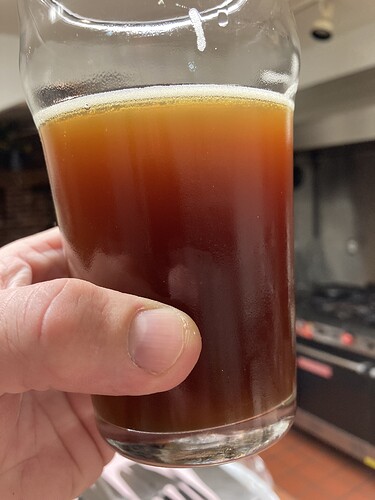Ever tried those sugar spheres? I’ve been thinking about giving those a go
Those Domino Dots work good. I’ve done that for bottling extra beer left after filling a keg. I think Flars was one of the folks that first mentioned that here…I think.
Interesting, I was just reading up on carbonation drops. Seems like domino dots might be a more consistent size?
no. I am not sure what each drop equals to gram of priming sugar.
Sounds like some research to be done!! Will try it on my next batch I think
There’s some extra reading from a previous thread on just this topic:
Sweet! Great info, thanks 
Batch priming is a lot more consistent and you can adjust the priming sugar for the highest fermentation temperature reached which greatly improves your chances of matching the style of beer your made.
Use the Northern Brewer priming calculator…
Use highest temperature rather tha current temperature if you can because the highest temperature effects the dissolved CO2 not current temperature
Sure it explains that warm brew will have less CO2. And absorbing that gas, needs to be cooler than room temp to make a difference… BUT… then how does it affect yeast? Has the “targeted ones” been exterminated by heat? Whats left?.. Less attentive yeast in suspension…
This stuff gets real crazy… Thankfully… I keg… 
Sneezles61
I’ve never had an issue with yeast in a bottle dying at any temperature I can stand to live in. Yeast typically doesn’t die because it falls out of “ideal” temperature range.
Wow I had no idea carbonation could be a function of ferm temp, but it makes sense. I really can’t wait to brew my next batch. I think it will be a BIAB kolsch, I already have the k97 dry yeast. And it will be a hit at work.
I was pointing to the yeast taking more time to re-ferment in the bottle… Why does it take half the time to ferment a full batch?
I stand firmly, that the robust yeast have all left, or are spent, and the less flocculant yeast are whats left to do the job…
Again… theres alot of variables going on.
Sneezles61
It would stand to reason a sugar manufacturer or maybe (hint hint Northern Brewer) a brewing equipment joint could outsource the production of consistently sized small solid dextrose droplets in combo with a chart detailing how many/beer style/bottle size. But I guess that would take all the fun out of it 
Could the sheer volume of yeast in a full batch work exponentially faster than the small amounts in bottles?
Yer first previous post… They do make some carbonation drops… I tried many years ago… wasn’t consistent for ME… But then being a left handed scandahoovian… Things can quickly go awry…
Now the next one… Over carbed will create bottle bombs… very dangerous!!. There are 2 breweries that DO bottle condition with fresh yeast and sugar… (and more than I’m aware of)
1- Sierra Nevada Pale Ale.
2- Duvel Belgian blonde.
The info online for carbonating in a bottle is a great place to start… I believe Squeegee has said he likes bottling and that whole process… So if you go/stay that route… You pay attention, you’ll find what does work… and what gives a so so outcome… Its part of the hobby… To do it enough, the outcome becomes better… Easy, eh? 
Sneezles61
Chef means even smaller drops so like 1,2, or 3 in a bottle could yield different results. They used to make a sugar scoop exactly for this purpose.
Yes exhausted yeast combined with heavy flocculant strain can be difficult to kick in for bottling condition. I think I’ve only ever had one batch out of hundred that refused to carbonate and that was a very high OG Russian Imperial Stout.
I’ve seen some of those drops and from what I’ve read the size is inconsistent so you end up weighing/measuring which still takes a significant amount of time. I hope to get a kegging system in the not too distant future. Meantime, I’m a bottling fool:grinning:. I actually can’t wait to mess around with specific amounts of sugar for carbonating different beer types. Got about 17 hours to go on my 72 hour fridge tester so 

You have to take some pictures of the experiment
Will do for sure
Here is a pic of my altbier after 72 hours (2 weeks + 3 days total) in the fridge. Slightly more carbonated than after just 2 weeks. The flavor diff is huge tho. Nice med caramel malty flavors with a pretty clean finish that I think will continue to improve. Guess I have to keep testing. Putting a bomber in today to test in 3 days
